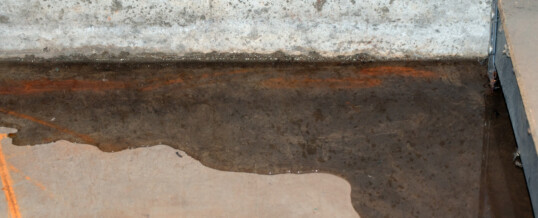
If you’re one of the 67.4% of Americans that owns property, it’s likely that you need to contend with a basement or crawl space that naturally traps moisture. While this can be irritating, it’s a pretty easily-managed problem- the installation of a vapor barrier can help to eliminate this issue.
But what is a vapor barrier, anyway? That’s what we’re going to to talk about here today. Read on to learn what a vapor barrier is, its purpose, how it differs from the encapsulation process, and more.
What Is a Vapor Barrier?
A ‘vapor barrier’ is a broad concept that refers to any material used for damp-proofing a crawl space or basement. Usually, this means a piece of plastic or a tarp that encloses the space. This barrier is meant to stop moisture from being trapped in the area.
Vapor barriers are not sealed systems. They are simply thin pieces of plastic that overlap at the seams to reduce the flow of dampness. Because they are not sealed and stop short of your walls, moisture is sometimes able to bypass the barrier.
While not perfect, a vapor barrier is an advantageous system for those who have recently realized that they have moisture in their crawlspace. Vapor barriers are often put in place by the homeowner using them, but they will occasionally be professionally installed. They are generally effective at reducing the amount of moisture in a crawlspace even though it is not 100% eliminated.
To get rid of dampness altogether, professionally reinforced vapor barriers will need to be installed in conjunction with heavy-duty crawlspace encapsulation.
Vapor Barriers vs Crawlspace Encapsulation
A vapor barrier is usually around 4-6mm thick, which reduces moisture. However, to eliminate it altogether, you will need a thicker plastic of no less than 8mm thickness. Installing such a barrier is a process called ‘crawl space encapsulation.’
During the encapsulation process, professionals will install a heavy-duty polyethylene barrier over all surfaces in your crawl space. This includes all of the foundational walls as the floors and ceiling. Most importantly, professionals will seal this barrier around the entire perimeter of your crawlspace to prevent moisture from getting in through cracks.
To conceptualize the difference between vapor barrier use and crawlspace encapsulation, imagine a swimming pool’s lining. Some people may choose to save money by lining it with low-quality materials in a DIY setting, which will work for a little while. However, they will pay the price of having a leaky and non-functional pool later. That’s what a vapor barrier is like.
However, others may have the pool professionally-lined with durable materials. This will cost a bit more up front, but it will provide a high-quality sealed lining that can last for many years with a little maintenance. There are never any leaks. That’s how crawl space encapsulation works- it keeps your space dry and your air clean for many years to come.
What Purpose Does It Serve?
The primary purpose of both vapor barriers and encapsulation is to eliminate the buildup of moisture within your space. This may sound obvious, but there are many important reasons that eliminating dampness is essential. Your health, home, and belongings depend on your encapsulation.
Maintaining Your Health
Investing in a good moisture reduction system means that you will not need to worry about mold and mildew festering within your space. These along with potentially harmful fungi thrive in dark, damp spaces such as a poorly-encapsulated crawlspace.
This is a huge issue because mold comes with a plethora of health risks including heart and lung problems. Crawlspace encapsulation can help to prevent issues such as respiratory failure, asthma attacks, shortness of breath, and infection.
Strengthening Your Home
Moisture buildup can do serious damage to the foundation of your home. It can cause ceilings to sag and walls to droop. In extreme cases, this can even lead to he foundation of the building caving in, which will inevitable result in a hazardous environment and thousands of dollars worth of damage.
Encapsulation stops wetness from settling into the walls and ceilings of your home’s base. This strengthens the entire building because the base is not going to become delcate and/or droop.
Protecting Your Belongings
Finally, crawlspaces (especially larger ones that toe the line to being a basement) are generally used as storage for those who live in the home. Belongings that you want to keep but may not be using tend to make their way into this space, including family heirlooms that aren’t on display. Moisture getting into boxes and bins can result in a lot of harm to your precious items.
If there is any paper in the crawlspace whatsoever, the damage will be irreversible. However, even if you are storing other, more durable items in boxes and bins, mold is still likely to build up inside them. Mold and mildew will make most items insalvagable, so it’s best to avoid the possibility altogether.
Get Started With Crawlspace Encapsulation
So, what is a vapor barrier?
It’s basically a way to keep moisture out of the basement or crawlspace of your home. This has a lot of great impacts including a stronger foundation, less mold-related health problems, and fewer overall maintenance costs.
Contact us with any remaining questions that you may have about crawlspace vapor barriers or to sign up for a free inspection of your space. We’re excited to hear from you as soon as possible and will assist you within 24 hours. Feel free to reach out at any time- we’re eager to assist!
ShareFEB
